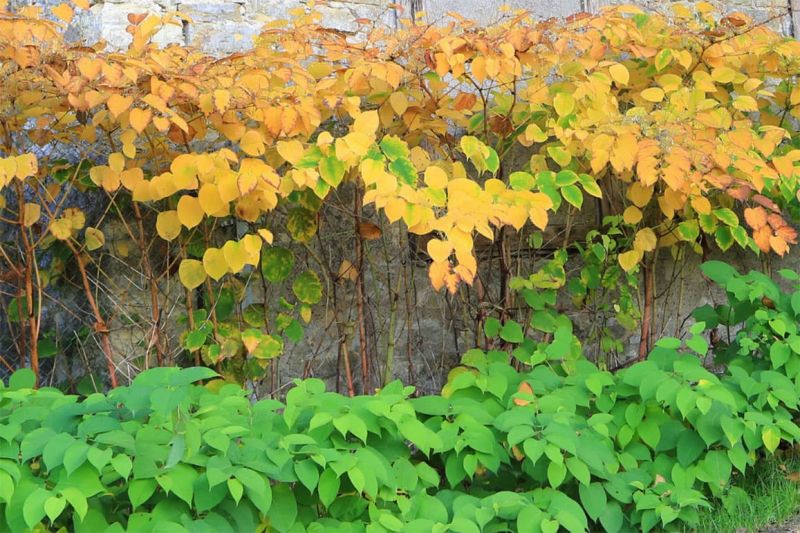August has been colder than usual this year and already it feels like autumn is on its way. So with the changing seasons, what does this mean for Japanese knotweed? Does it change in appearance? Can it still be treated and removed? Here are our clear and crisp answers to these and other related questions.

Japanese knotweed is a herbaceous perennial
Just like geraniums and delphiniums, Japanese knotweed will slowly die back as it get cooler, storing it's energy in its roots. The root or rhizome hibernates throughout the winter, and when spring arrives, new shoots will sprout from the energy-filled root, to terrorise our gardens and land once again!
Identifying Japanese knotweed in autumn
Japanese knotweed looks much the same in autumn as it does in summer. So, identification is easy. In autumn, Japanese knotweed leaves are still shield-shaped, its foliage thick and the canes look like bamboo. However, as the days get cooler, this invasive plant will start to wilt.

Stage one - turning colour
Firstly, Japanese knotweed leaves will begin to yellow around the edges.
Stage two - total transformation
Eventually, the colour takes over the entire leaf until it looks lemony-yellow, as seen in this close-up image of a Japanese knotweed leaf.


Stage three - signs of decay
Finally, around October time, the plant will really show signs of decay. For example, the stems will turn brown but will still remain tall. At the same time, the plant loses its seed cases and flowers to the ground.
Once the end of autumn arrives, the leaves will turn brown, the canes go brittle and the plant will, for all intents and purposes, look dead. But don’t be fooled! Even after significant frost, the plant will hibernate like a bear, getting ready to attack the landscape once again in the spring!
Can Japanese knotweed still be treated in autumn?
Yes, Japanese knotweed can still be treated in autumn. In fact, the start of autumn is the best time to treat this invasive plant with herbicides. Biologically speaking, the plant has reached its full maturity, having sent all its energy to the roots. This is why treating Japanese knotweed at this time is most effective, because the poison can easily travel to the rhizome and hinder its growth.
Need help identifying Japanese knotweed this autumn season? For free identification and advice contact our friendly team at TCM today.